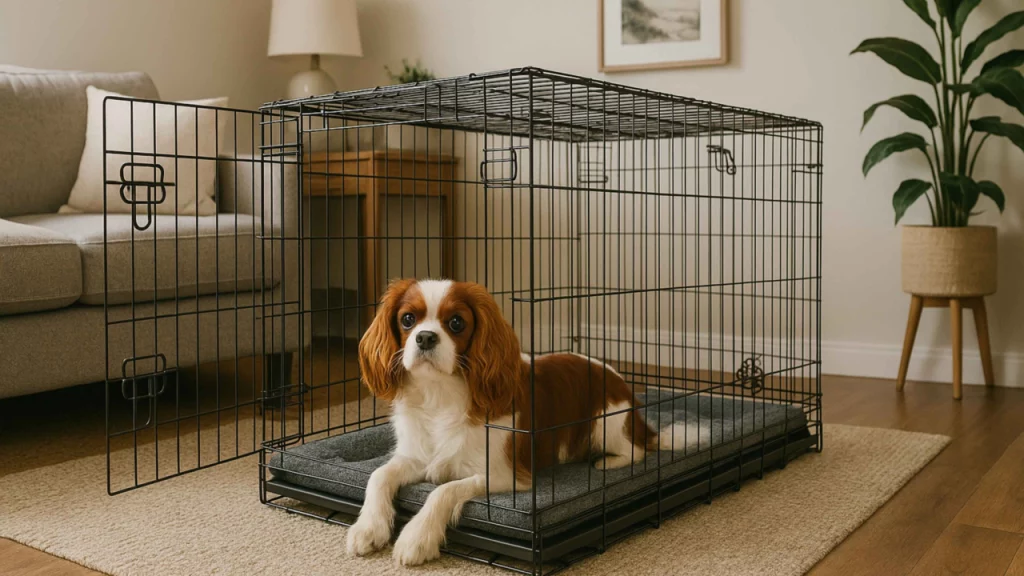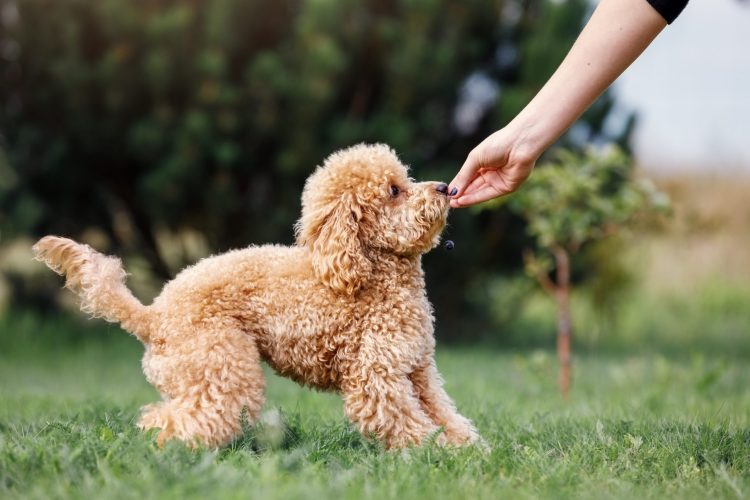Crate training is one of the most effective and beneficial techniques in pet care, yet it is often misunderstood. Many pet owners have reservations about using a crate, associating it with confinement or punishment. However, when used correctly, a crate can serve as a positive and essential tool for your pet’s well-being. It can provide a safe, secure environment for your pet, help with housebreaking, and prevent unwanted behaviors such as chewing on furniture or other destructive habits. In this article, we will explore the benefits of crate training, a step-by-step guide on how to train your pet using a crate, and common mistakes that pet owners make along the way.
Understanding the Benefits of Crate Training for Pets
Crate training offers a range of physical, emotional, and behavioral benefits for both dogs and cats. While it is more commonly used with dogs, cats can also benefit from crate training, especially when traveling or during stressful situations.
1. Safety and Security
For pets, a crate provides a secure, den-like environment where they can retreat when they need to relax or feel overwhelmed. Just as wild animals seek out a den to rest, pets feel safer and more comfortable in a crate. The crate becomes their personal space, offering them a sense of security.
Benefit to pets:
- Pets, particularly those with anxiety or those recovering from an illness, find comfort in having a designated “safe space.”
- It prevents your pet from getting into dangerous situations when unsupervised, such as chewing on electrical cords or ingesting harmful substances.
Benefit to owners:
- You can rest easy knowing that your pet is safely contained when you cannot supervise them, such as during the night or when you’re away from home.
2. Housebreaking and Training Tool
Crate training is one of the most effective tools for housebreaking puppies and newly adopted dogs. Since dogs naturally avoid soiling their sleeping area, a crate can be a helpful way to teach them to hold their bladder and bowels until they are let outside.
Benefit to pets:
- Crates teach puppies and adult dogs to control their bladder and bowels by limiting access to the rest of the house.
- It establishes a routine where pets learn when it’s time to go outside for bathroom breaks.
Benefit to owners:
- It makes the housebreaking process easier and faster, reducing accidents indoors.
3. Reduces Destructive Behavior
Pets, particularly dogs, can engage in destructive behaviors, such as chewing on furniture, shoes, or other household items, when left unsupervised. Crate training prevents these behaviors by providing a safe and controlled space for your pet when you’re not around to supervise them.
Benefit to pets:
- It provides an outlet for calming and resting, preventing boredom-driven behaviors.
- Pets are less likely to develop habits like digging, chewing, or destroying household items if they are safely confined to a crate when left alone.
Benefit to owners:
- You won’t have to worry about coming home to find your furniture chewed up or your shoes destroyed.
4. Travel Safety and Comfort
For pets that travel frequently, either by car or plane, crate training is essential for their safety and comfort. A familiar crate can provide a sense of security when traveling, making the journey less stressful for both the pet and the owner.
Benefit to pets:
- A crate offers a consistent environment, which can reduce travel-related stress.
- It ensures your pet’s safety, preventing them from roaming around in the car or causing distractions while you’re driving.
Benefit to owners:
- Traveling with a pet is easier and more convenient when they are crate trained, especially during trips to the vet or while on vacation.
5. Aiding in Veterinary Visits and Boarding
Crate training is beneficial for trips to the vet or pet boarding facilities. Many veterinary clinics and boarding centers use crates to transport pets and keep them safe. Pets that are accustomed to being in a crate are less likely to feel anxious in these situations.
Benefit to pets:
- Crate training helps your pet get used to being in a crate for short periods, which is helpful when they need to be crated for procedures or during vet visits.
- It reduces stress when boarding because the pet will associate the crate with a safe and familiar environment.
Benefit to owners:
- Your pet will be more comfortable in these unfamiliar settings, making veterinary visits or boarding experiences less stressful for both of you.
6. Positive Space for Quiet Time
Crate training can help create a routine for your pet that includes quiet time. Just as humans sometimes need a space to relax or retreat to, pets benefit from having their own space to decompress.
Benefit to pets:
- It provides a sanctuary where pets can retreat when they are tired or overstimulated.
- Pets are more likely to self-regulate their energy and emotions if they have a place to relax.
Benefit to owners:
- A pet with a designated quiet space is more likely to be calm and content, leading to fewer behavioral issues and a happier household.

Step-by-Step Guide to Crate Training Your Pet
Crate training is a process that requires patience, consistency, and positive reinforcement. Below is a step-by-step guide to help you crate train your pet successfully.
Step 1: Choose the Right Crate
The first step in crate training is selecting the right crate for your pet. The crate should be large enough for your pet to stand up, turn around, and lie down comfortably. However, it should not be so large that your pet can designate a “bathroom” area in one corner and sleep in another.
- For dogs, choose a wire crate with a removable tray for easy cleaning. Many crates come with a divider that can adjust the space as your pet grows.
- For cats, a plastic crate or a soft-sided carrier may be more appropriate.
Step 2: Make the Crate a Positive Space
Introduce the crate gradually and make it a positive experience. Place the crate in a central area of the home where your pet can see family members and be part of the activity.
- Place soft bedding or a favorite toy inside the crate to make it comfortable.
- Allow your pet to explore the crate on their own. Leave the door open at first to avoid making your pet feel trapped.
- Feed your pet near the crate or inside it to create a positive association with the crate.
Step 3: Short Sessions Inside the Crate
Once your pet is comfortable entering the crate, start closing the door for short periods. Begin with just a few seconds and gradually increase the time as your pet becomes more comfortable. Use treats and praise to reinforce calm behavior while inside the crate.
- Always remain calm and patient. Never force your pet into the crate or use it as punishment.
- Start with short periods of time, then gradually increase the duration as your pet gets more accustomed to being crated.
Step 4: Leave the Room for Short Periods
Begin leaving the room for short periods while your pet is inside the crate. This will help your pet get used to being crated while you are out of sight. Start with just a few minutes and gradually increase the length of time.
- Keep goodbyes and arrivals low-key to reduce anxiety.
- Never use the crate as punishment, as this can lead to negative associations.
Step 5: Gradually Increase Crate Time
As your pet becomes more comfortable with being in the crate, increase the amount of time they spend inside. Eventually, your pet will learn to be calm and relaxed during longer periods in the crate.
- Keep crate training sessions positive by rewarding your pet with treats and praise when they remain calm.
- Avoid crating your pet for excessively long periods, as this can cause stress and anxiety.
Step 6: Establish a Routine
Pets thrive on routine. Once your pet is crate-trained, establish a regular routine for crate time. Use the crate for naps, during meals, or when you’re not home. Consistency will help your pet understand when it’s time to rest and when it’s time to be active.
Common Mistakes and How to Avoid Them
While crate training is effective, it’s important to avoid common mistakes that could hinder the process.
1. Using the Crate as Punishment
Crates should never be used as a form of punishment. If your pet associates the crate with negative experiences, they may resist going inside or develop anxiety.
Solution: Always use positive reinforcement and reward your pet for entering the crate voluntarily. Make the crate a safe and comfortable space.
2. Crating for Too Long
Crating your pet for extended periods, especially without breaks, can lead to anxiety and discomfort.
Solution: Avoid crating your pet for more than a few hours at a time. Ensure your pet gets enough exercise, playtime, and potty breaks during the day.
3. Rushing the Process
Crate training is a gradual process. Rushing through the steps can lead to negative associations with the crate and cause anxiety.
Solution: Be patient and take your time. Gradually increase the amount of time your pet spends in the crate and be consistent with training.
Conclusion
Crate training is one of the most beneficial and humane ways to train your pet. It provides them with a safe, secure environment while helping to reduce destructive behaviors, aiding in housebreaking, and ensuring your pet is comfortable during travel or veterinary visits. With the right approach and consistent training, your pet will come to view their crate as a positive space, providing them with comfort and security for years to come.























































